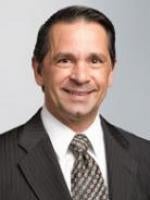While the majority of price gouging enforcement has occurred at the state level (see Proskauer on Price Gouging — A Coast-to-Coast Reference Guide), the federal government has also been active, and several federal price gouging bills have been introduced, though none have been signed into law. See, e.g., S. 3574 (empowers the FTC and Attorney General to enforce civil and criminal penalties for price gouging); H.R. 6472 (prohibits “unconscionably excessive” pricing “indicating the seller is using the circumstances related to” the emergency to increase prices); H.R. 6264 (creates a new criminal offense for price gouging during a state of emergency); H.R. 6450 (based on California law, limits raising price of consumer goods to no more than 10% after an emergency declaration).
Therefore, with no comprehensive federal legislation on price gouging, enforcement has largely taken the form of the Department of Justice and other executive agencies acting under the Defense Production Act (the “DPA”), a law passed in 1950 in response to the Korean War which gives the president broad authority to manage domestic industrial affairs in the interest of “national defense.” While originally enacted in wartime and more commonly employed to regulate certain foreign investment into U.S. businesses, authority extends to the Executive Branch to act in response to national emergencies like COVID-19.
The DPA has two sections relevant to the COVID-19 pandemic: an anti-hoarding provision and an anti-price-gouging provision. The anti-hoarding provision bars accumulation of materials “in excess of the reasonable demands of business, personal, or home consumption.” The anti-price gouging provision bars accumulation of materials for the “purpose of resale at prices in excess of prevailing market prices.” The act carries both civil and criminal penalties.
Pursuant to the DPA, President Trump has issued three executive orders to combat price gouging, which delegated authority to the secretaries of the U.S. Department of Health and Human Services and the U.S. Department of Homeland Security to prevent the hoarding of designated health and medical resources necessary for combatting the spread of COVID-19. On March 25, the Secretary of Health and Human Services designated 15 categories of health and medical resources as scare or threatened materials, with the designation expiring in 120 days, bringing them within the scope of DPA enforcement.
Also in March, Attorney General William Barr announced a nationwide task force to address hoarding and price-gouging in the wake of COVID-19. The task force includes over one hundred federal prosecutors around the country and has opened hundreds of hoarding and price-gouging investigations into companies and individuals selling PPE and other goods designated as “scarce” by HHS. While reporting has emerged that White House officials have resisted the reach of the Task Force, and that enforcement has not been as robust as advertised by the DOJ, federal price gouging enforcement is real and must be considered in any compliance program.
While a general prohibition on price-gouging may seem familiar, two distinctions are worth highlighting with respect to federal enforcement. First, the DPA explicitly focuses on accumulation of materials. This is in contrast to many state price gouging laws that focus solely on whether the price being charged is in excess of a determined baseline level, with various exceptions like for increases in costs.
Second, while many state price gouging statutes have either specific benchmarks for price increases (generally ranging from 10-30%) or use specific language to target only extreme price increases (such as “excessive” or “unconscionable”), the DPA simply prohibits “resale at prices in excess of prevailing market prices.” Because “excess” is not defined in statute and has not yet been defined by the courts, it is unclear what exactly qualifies as price gouging under the DPA (though state laws probably provide a reasonable analogue). In comments before the Senate Judiciary Committee on the progress of the Task Force, DOJ attorneys stated that the Task Force is focused on “profiteering.” However, despite further noting that traditional costs may play a role in determining whether price gouging has occurred, the DOJ declined to offer any bright line rules.
Enforcement to date offers some guidance. In the first case brought by the federal government for COVID-19 related price-gouging, criminal charges were brought against a defendant for allegedly using his retail sneaker and sports apparel store to amass and sell large quantities of PPE at a more than 1,000% markup. In other instances, federal prosecutors have brought criminal charges against companies and individuals, alleging either attempts to overcharge the government for PPE or simply defrauding the government with offers to sell equipment that never existed in the first place. However, while federal enforcement to date might seem focused on “bad actors” selling and hoarding PPE and other medical equipment associated with the COVID-19 pandemic, the broad language of the DPA, along with accounts of active DOJ inquiries, makes it important to continue to monitor federal actions in this space and to consider federal restrictions when putting a price gouging compliance program in place.







 />i
/>i
